I don’t know about you, but often when I hear brands talking about their paid media strategy it is heavily biased to new customer acquisition. For some brands this may be the right thing to do but I like to look at all paid media strategies as a way to not only increase the number of new customers I attract but also ensure that my existing customers stay with me. On top of that, I like to look at what we can do to encourage our happy customers to become our biggest brand advocates and recommend us to their friends.
Businesses that have the ability to sell to their customers on multiple occasions will often find the most profit comes from those that have stayed loyal to the brand for a long time. There will obviously be less of these but our job are marketers should be to attract customers who are more likely to stick around.
We can see from the above graph where the sweet spots are. If we can focus a paid media strategy on customer acquisition but then also devise a strategy to encourage that audience to buy again, that is when the magic really starts to happen. It actually costs around 7x more to acquire a new customer than it does to retain an existing one so it’s even more important to keep what I am about to share in the forefront of your mind!
Customer Loyalty vs Brand Loyalty
Before we get started with the loyalty and advocacy strategies, I want to spend a minute or two just talking about the difference between Brand and Customer Loyalty.
Customer Loyalty can be gained by offering the right discounts for the right products at the right time.
Take booking.com and hotels.com as an example here. People don’t book on either website because they are loyal to the brand, they look at both platforms to find the best deal in the best location in the right room. Customers can be swayed between both brands and can be enticed away if the price and offering is just what they are looking for.
Brand Loyalty is easier to maintain once established but harder to win in the first place. It takes time, dedication, an amazing product or service and an impeccable reputation.
Apple and Android are a very good example of this. They have both built ecosystems that are loved by their customers. Most people you speak to will either have an Android phone or an iPhone. If they have an iPhone, they will more often than not also have a Mac. They become loyal to the brand and would be hard pushed to move away no matter what amazing deal the other brand were to offer. This is Brand Loyalty.
Customer Match
Back in October 2013, Facebook released the first ever Customer Match feature. For those of you who aren’t aware of what Customer Match is, let me explain…
Customer Match is where you can take an export of email data from your CRM database and upload that into one of the five platforms that have this feature (Facebook/Instagram, AdWords, Linkedin, Twitter and Pinterest). The platform will then go through your list and cross match it against their database. Which ever email addresses appear in their database get moved into a Customer Match list that you are able to target with paid ads.

As I mentioned above, Facebook were the first to launch this feature in 2013 and the other platforms soon caught onto the idea and launched their own versions shortly after. Surprisingly Twitter was next to launch in June 2014 and AdWords didn’t come on the scheme until almost two years later in September 2015.

There are lots of benefits to using Customer Match within your targeting including:
- Tailored ad messages – you can customise the message people on your customer match list see
- Dedicated advertising to an audience – if you run a campaign only targeting your list, you have full control over what they see and when
- Increase or decrease bids – there may be times where you decide you want to pay more or less to advertise to a certain customer match list; this is possible
- Stop certain audiences from seeing your ads – if you have a business that can’t see to an audience more than once, you can stop ads from showing to an audience to save wasted budget
- Demographics and Interest insights – a lot of the platforms will give you a load more insight into your audience when you upload the list which can be hugely beneficial not only for your paid media campaign targeting but for other areas of marketing as well
What a lot of people don’t do when using Customer Match is spend the time cleansing and segmenting the database before uploading it. You should think about Customer Match in the same way as you do ad groups. You wouldn’t want to include hundreds of keywords in the same ad group, you want the group to contain groups of keywords that are closely related to each other.
Here are a few examples of how you could segment your database prior to upload:
Actual Customers
- Product or service purchase
- Gender
- Age
- Location
- Month of year of purchase
- Combined value of purchases (LTV)
- Time of month of purchase (start, middle, end)
Prospects
- Product or service enquired about
- Gender
- Age
- Location
- Month of year of enquiry
- Potential value of purchases
- Time of month of enquiry (start, middle, end)
Email Data
- Gender
- Last email open date
- Date of initial sign up
- Types of content they enjoy reading
- Location
One thing to bear in mind when using Customer Match is the number of emails that the platform needs to match before you can actually target them. If you don’t have a large database, then segmenting may not be an option for you.

This study from Wordstream a couple of years back looked at the match rates for AdWords, Facebook and Twitter after they uploaded over 360k email addresses. AdWords and Facebook were able to match around 50%, Twitter much lower at 10%.
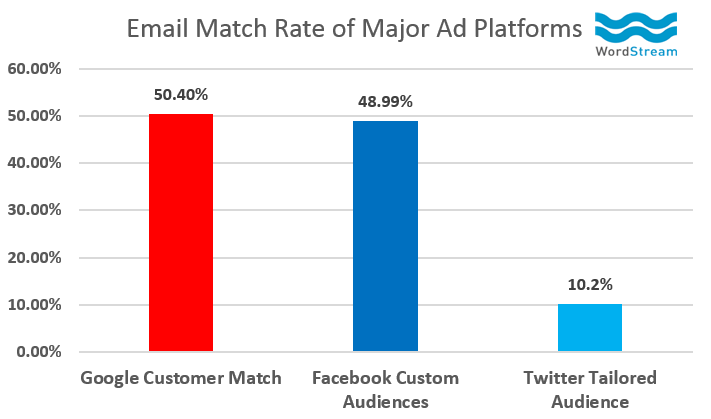
It would be great if they could do this exercise again but include Pinterest and Linkedin to see how they compare also.
Tweet them and ask: https://twitter.com/SamJaneNoble/status/895965471530471425

Remarketing Lists and/or Website Custom Audiences
Whilst Customer Match is great, you are never going to be able to match all your database with the platforms so I would also be creating Remarketing Audiences (Google Analytics and Bing Ads) and Website Custom Audiences (Facebook and Instagram) in order to achieve the same goal but by using cookies rather than email addresses. Your lists for targeting will be a lot greater using this method but you lose the ability to really segment the audience down.
Best case scenario… do all of this.
Loyalty Strategies
I am going to give you 17 different strategies for using paid media to increase customer loyalty. If you have any other ideas, I would love to hear from you so I can update this post (and I will of course, credit you for doing so).
Some strategies can be used across all the platforms whilst others are very platform specific so let’s break this down…
All Platforms
1. Dedicated Landing Pages for Existing Customers
Imagine walking into a local restaurant that you have been to on multiple occasions and you know that the owner knows who you are. If he were to greet you like a brand new customer that he hadn’t met before, I don’t think you would like it that much.
This is exactly what we do to existing customers online when they revisit our websites and we now have the functionality across all platforms (RLSA, Customer Match, Website Custom Audiences) to avoid this and send them to a page that welcomes them back and treats them as a valued customer.
2. Dedicated Landing Pages for New Customers
In the same vein as mentioned above, we want to make sure that any new customers are seeing different content on our websites. How many times have you landed on a site being a first time customer and get faced with a special offer for existing customers or on the flipside, existing customers seeing new customer discounts.
Here is a prime example from TruPrint; I have been a customer of theirs for years and made multiple purchases yet every time I go to their website after clicking a PPC ad, I still see the same new customer deal.
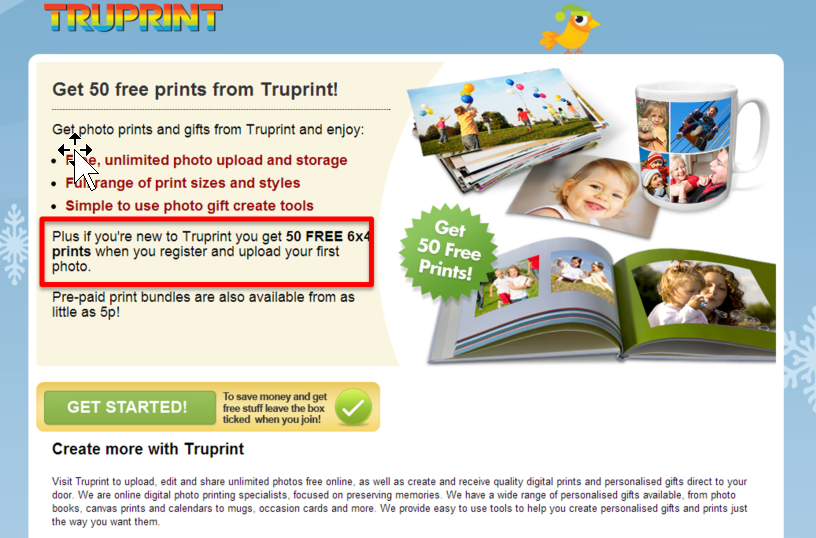
Dedicated landing pages for new and existing customers combats this problem.
3. Prominent Section on Site for Loyalty Scheme
I have worked with so many brands in the past that offer a Loyalty Scheme to their customers yet they don’t actually promote it on their website.
Having a prominent section on the site dedicated to talking about the scheme and what customers can get has multiple benefits including:
- Building up an audience of visitors to that section of the site
- Having the ability to get the page/section ranking organically if someone searches for your brand name plus loyalty scheme terms
- Encouraging existing customers to join the scheme and take advantage of the discounts that come with it
- Showing new customers or first time purchasers what they could get if they buy from you again
AdWords and Bing
4. RLSA with Competitor Bidding
Competitor bidding is something that used to work amazingly well going back a few years ago but with Quality Score and relevancy playing such a big part in PPC, it isn’t as good as it used to be. Additionally, you have to go very careful with trademark terms and always ensure you don’t include the competitors name in your ad text.
However saying that, competitor bidding can work really well coupled with an RLSA or Customer Match (AdWords only) list containing your existing customers. If any of these customers go to Google or Bing and search for a competitor name, the likelihood of them looking to switch away from your brand and buy from the competition is pretty high.
Using this tactic you can show these people a dedicated advert that talks about your loyalty scheme, any repeat buy discounts or anything that will entice them to come back to your site and buy from you again.
RLSA and Customer Match means that you are only showing ads to that particular list so the advert text can be fully customised to what ever you want it to say.
5. Unique Repeat Customer Discounts in Adverts
Using the above tactic of targeting your existing customers, you can make sure they see an advert that includes a specific discount code should they happen to search for any of the other keywords that you are bidding on.
If you can give away a small discount to keep that customer longer, they are more likely to buy from you again because they know you already have their details on file so the purchase process will be streamlined, faster and more efficient.
Example of how this could look in the search results:
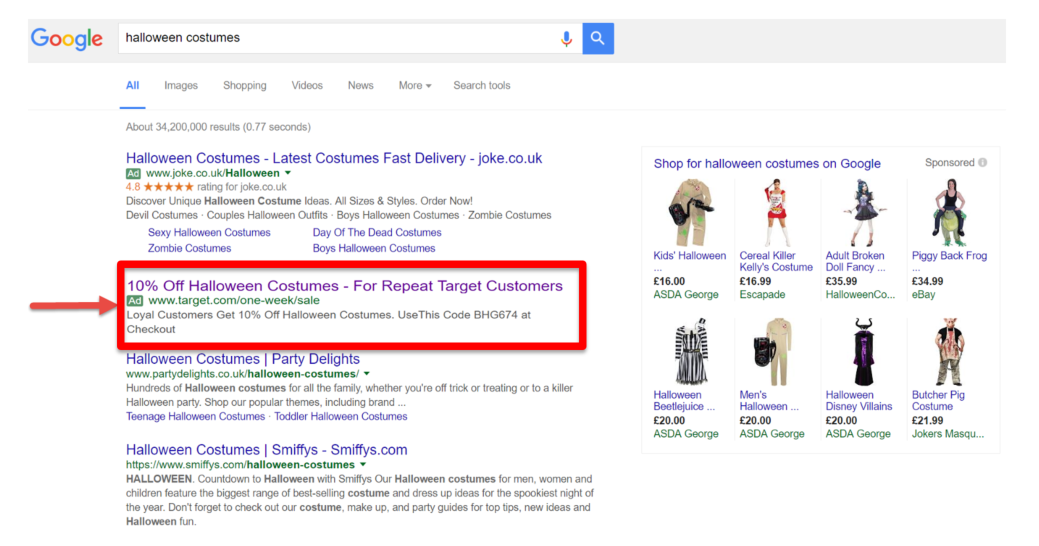
6. Bidding on Brand + Loyalty Scheme Terms
If you have a loyalty scheme and even if you don’t, you want to make sure that you are the brand that appears at the top of the search results if anyone is searching for these types of terms:
- Brand + Loyalty Scheme
- Brand + Loyalty Programme
- Brand + Voucher Codes
- Brand + Discounts
- Brand + Rewards
- Brand + Reward Schemes
- Etc
Rather than letting someone else capitalise on the traffic, pop an advert up. The traffic will be cheap because you are that brand and you can funnel the traffic back into your website.
Just AdWords
7. Remarketing on the GDN with Relevant Products/Services
This is one of the more simple and easy to setup strategies but it is often overlooked. If you have a list of people who have purchased a certain product or service from you and have an additional related product or service that you want to show them, remarketing on the Google Display Network (GDN) can work really well for this.
To really make this work you should look through historic second purchases based on the first purchase so you know what people often buy following the initial sale. You have seen how ecommerce sites say at the bottom of a product page something like ‘other people who brought this also purchased…’ – you can do the same as this with your remarketing but actually base the whole thing on solid data to show this and correlate against historic actuals.
They may not purchase from you straight off the back of a display ad but display absolutely helps people along their decision making journey.
8. Gmail Ads to Promote a Loyalty Scheme
Within Gmail you can either work with an RLSA list or a Customer Match audience so that the ads are only targeted to your existing customer base. You can create the Collapsed Ad to entice them to click through and use the Expanded Ad to really sell in the Loyalty Scheme and get the customer signed up.
9. Gmail Ads to Upsell to Related Products/Services
You can also use Gmail to upload a variety of different product (or service related) images to showcase the offering to your customers.
Similar to using the GDN for remarketing to cross sell and upsell, you can do the same in Gmail. Have a look at this example from Eastpak where we can see a selection of backpacks that they are promoting. If these were related to a product that I had purchased previously, I would be much more inclined to want to click through and engage with the advert as it is highly relevant to me.
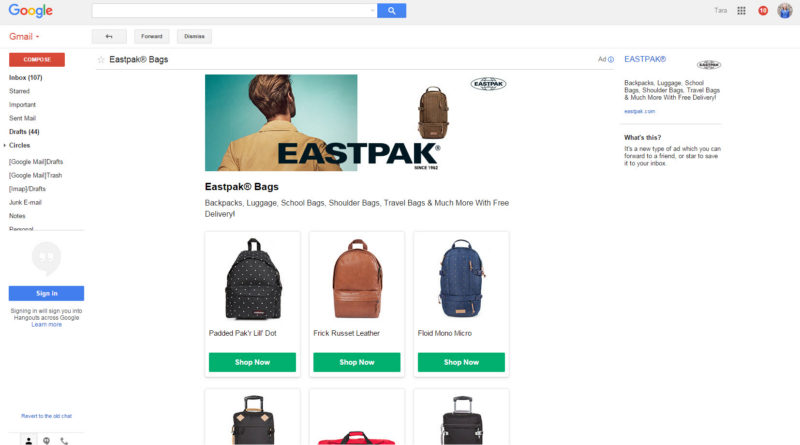
10. Segmented Customers by Purchase Month to Encourage Renewals
This strategy works for any business model that needs to encourage people to renew a contract; a car insurance brand being a good example of this.
If we segment our customer base by the month in which the policy was taken out, we can use customer match audiences (RLSA won’t work for this as the maximum cookie length is 180 days), then we can target people when they are researching ‘car insurance’ again nearing the time of renewal. If we can do something to either price match or encourage them to renew directly without purchasing through an aggregator (like most people do), the brand retains that customer for a second year and this is when insurers actually start making money.
11. Countdown Ads with Repeat Purchase Deals
Next up we have Countdown Ads coupled with RLSA or Customer Match. You can use these to create a sense of urgency with a repeat purchase discount. By adding an end date in which someone can take advantage of the repeat deal and using a countdown timer in your ad copy, you can push people to make a fast purchase.
Have a look at this example from Virgin America where I have mocked up an ad that is shown to anyone who has recently returned from a flight to New York and are searching again to book another flight to New Orleans. By offering them a 25% discount to book within the next 3 days, this catches the eye of the customer and should entice them to click through. The 3 days would drop down to 2 and then 1 before counting down in hours and minutes until it ends.
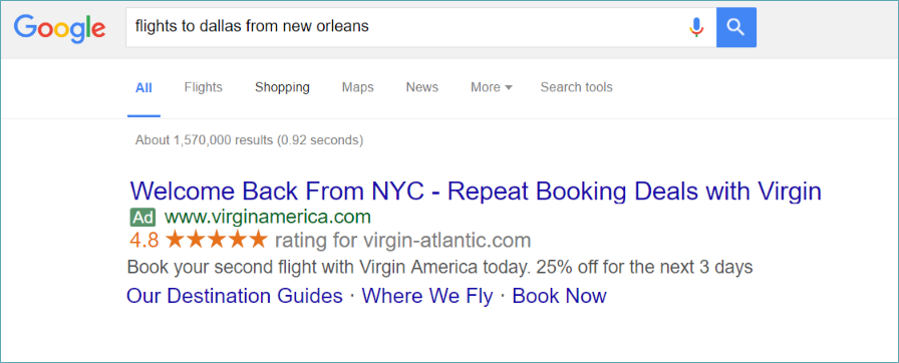
12. App Engagement Ads to Encourage Usage
My final strategy in this post for loyalty using the AdWords platform would be to take advantage of the App Engagement Ads feature. If you have an app that a customer or non-customer has downloaded but hasn’t used for a while, we could run a re-engagement campaign to get them using the app again. The more engaged your customers and non-customers are with your brand, the more likely they are to buy from you when they are next looking.
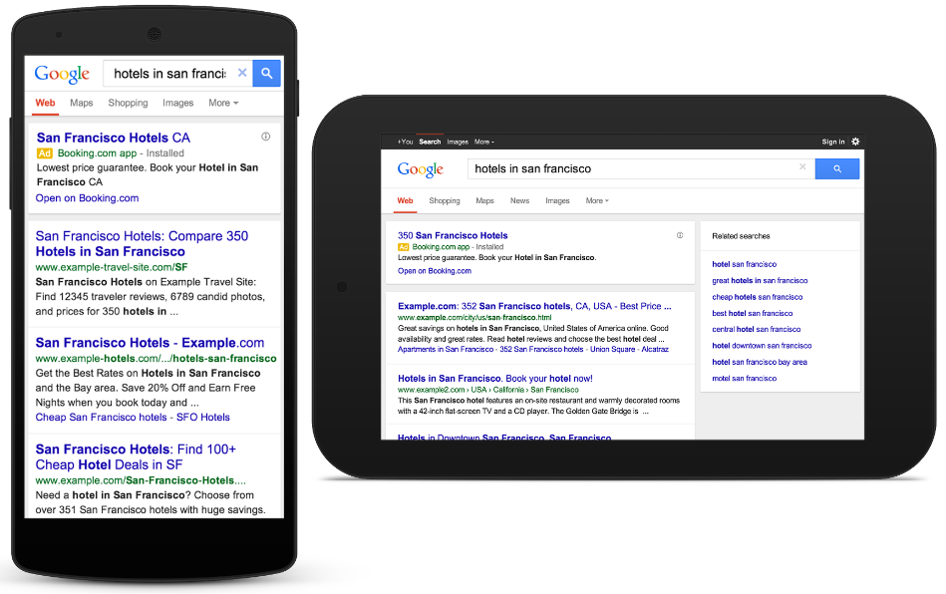
13. Lead Generation Ads to Drive Loyalty Scheme Signups
The key difference with Lead Gen Ads is that all actions are kept within the Facebook app; people don’t need to leave the interface and visit your website to complete the goal. They are great for collecting short bursts of data from people in an easy to digest format.
You can take full advantage of all the targeting options that come with Facebook and really hit the people you want to reach.
Lead Gen Ads in the context of customer loyalty could be used to get your existing customers signed up for your loyalty scheme or to capture their interest in an upcoming product or service that is due to launch.
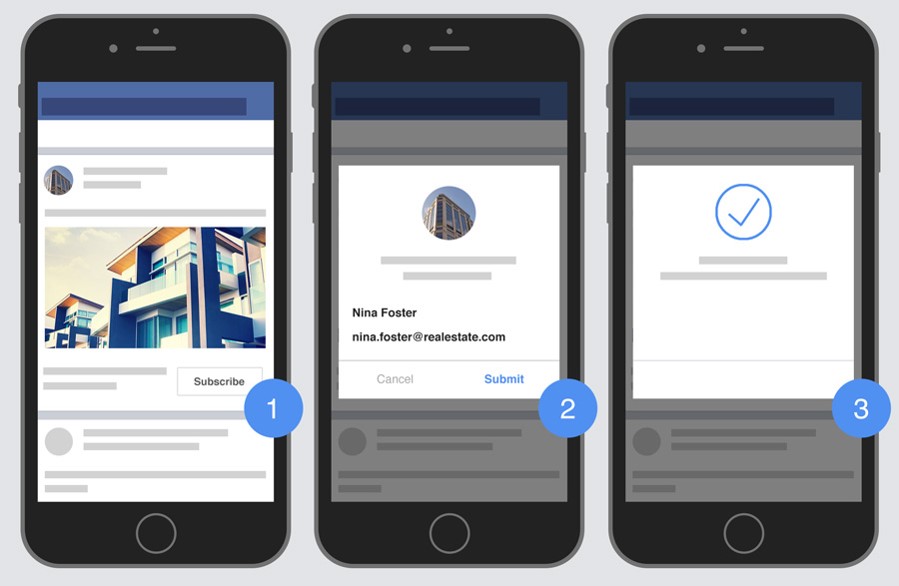
You set the question set and then anyone that fills in the form will be sent to a database and you can then download the csv to obtain all the details.
In addition, anything that you do on Facebook can help you to create an additional audience to target. So with this ad format, you can build out an audience of those who engaged with the ad and didn’t fill in the form, those who saw the ad but didn’t engage and also those who filled in the form. Facebook give you the ability to build lookalike audiences off any audience so if you are looking for more people to sign up to your loyalty scheme or gain interest in a new product, you could use this to do that.
14. Messenger Ads (Destination) for a Repeat Purchase Deal
This style of ad looks like any other standard Facebook newsfeed ad but when someone engages with the ad and hits the main CTA button (Send Message), they are taken to the Messenger App which will open with a pre-populated message from you.
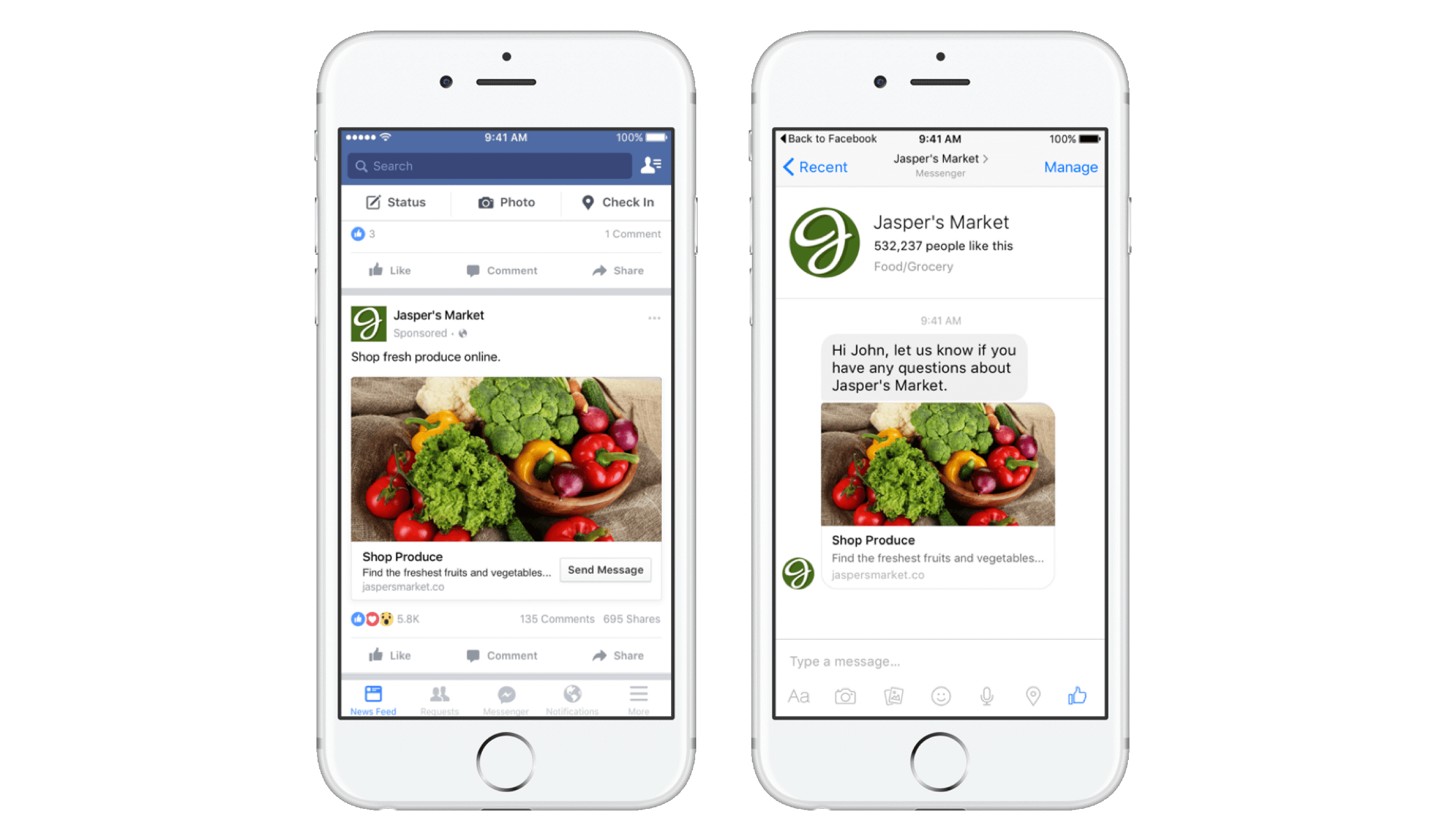
Imagine if you are targeting your existing customer base to present them with an exclusive repeat purchase deal, they can see the initial teaser message within the newsfeed ad and it wouldn’t be until they have hit the ‘send message’ button that they actually see the discount code.
You could also use this to promote a new product launch and engage with the customer if they send any messages back to find out more. With Messenger Ads, you can also incorporate forms within the message so you could treat these in the same way as we did Lead Gen Ads.
Facebook and Instagram
16. Remarketing to Showcase Other Products
You should treat remarketing on Facebook and Instagram in the same way as you would any other remarketing campaign but in this example you would want to make sure the most relevant products are being displayed in the ad. Personally, I think Carousel Ads work perfectly for remarketing especially if there are multiple products that are relevant to the initial purchase.
Here is an example of what a Carousel Ad looks like:
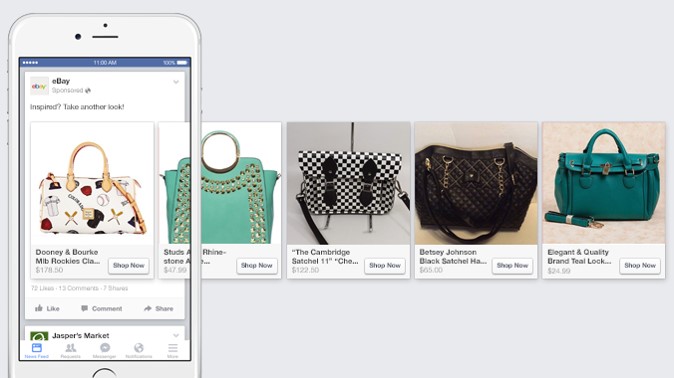
17. Target Loyal Blog Readers with a Thank You Message
This is a slightly different type of loyalty marketing but can work brilliantly to get your really engaged website visitors to turn into paying customers. The idea was first put to me by Jon Loomer who has written a very detailed post about how you should get this set up. The long and short of it is that you create a website custom audience of your most loyal blog readers and hit them with various thank you ad messages before trying to pull them into your conversion funnel.
There is no point me covering this in any great length as Jon’s post is the place to go for this: https://www.jonloomer.com/2015/10/13/facebook-ads-target-loyal-visitors/
Sponsored InMail to Promote New Product/Service
Linkedin launching Matched Audiences is very exciting especially for brands in the B2B space. You can couple this targeting with an InMail campaign so you are specifically sending messages to your audience. This can be used to encourage repeat purchases or promote new services or products that you are launching.
Matched Audiences are available for website retargeting, account targeting or contact targeting. The above tactic should be used with either website retargeting or contact targeting. Be warned that this can be an expensive marketing technique but can yield great results if you do it properly.
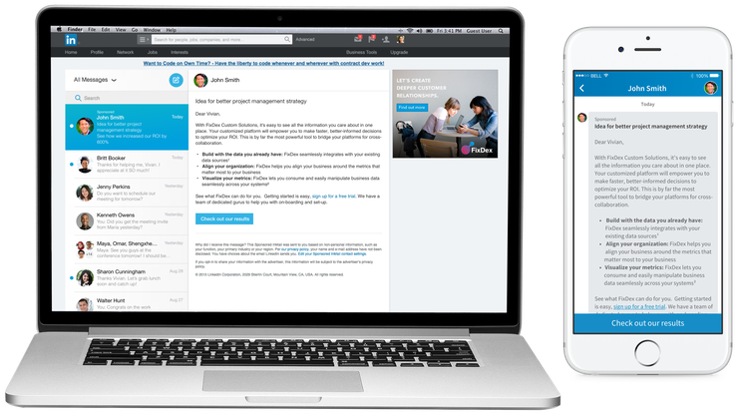
Action Points
So there you have it, a load of strategies to help you increase customer loyalty using paid media. Remember right back at the start when we were talking about the profitability of first time customers vs long time customers; keep this in your mind and relook at your paid media strategy to make sure you allocate enough budget to work on customer LTV.
Key action points from this post:
- Get an export of your CRM database (customers, prospects, email signups, event registrations etc) and segment it into themed groups of people
- Upload this data to all the available platforms to see what your match rates are
- Get a proportion of your paid media spend allocated to increasing customer loyalty
- Rethink your paid media strategy to incorporate loyalty marketing picking the right tactics for your business
- Change your monthly reporting to cover new customer acquisition and also LTV of your customers
If you have any questions or suggestions that can be added to this post, I would love to hear from you. You can reach me on Twitter on @SamJaneNoble or pop me a message in the contact form here.

One Response
It seems like the key difference between customer loyalty and brand loyalty is that customer loyalty is mostly transactional, whereas brand loyalty is a deeper, value-driven connection with the customer. Makes sense too that businesses need to take a broader approach and make a bigger investment to capitalize on brand loyalty. This approach also helps explain why so many industries are becoming dominated by just a couple companies.